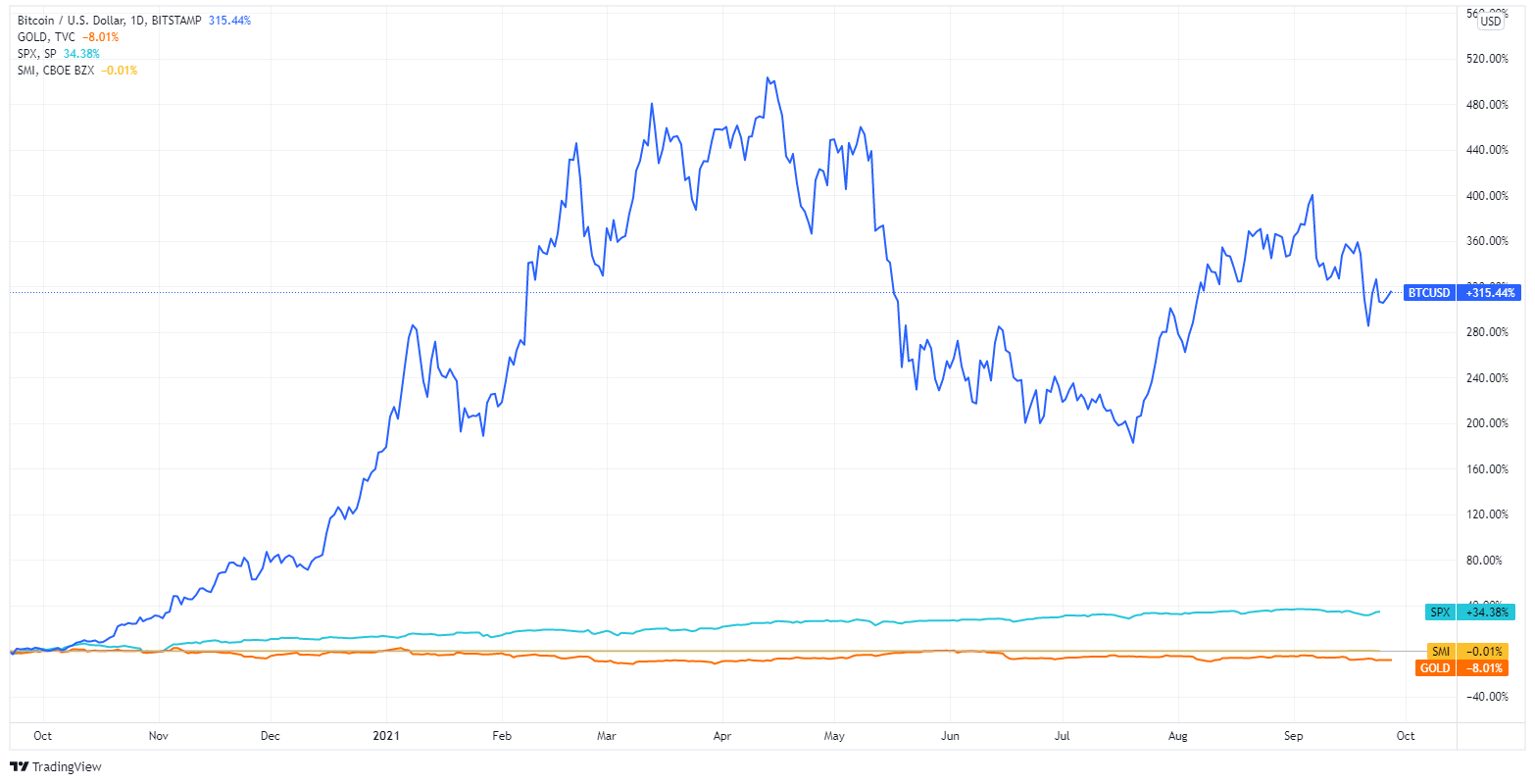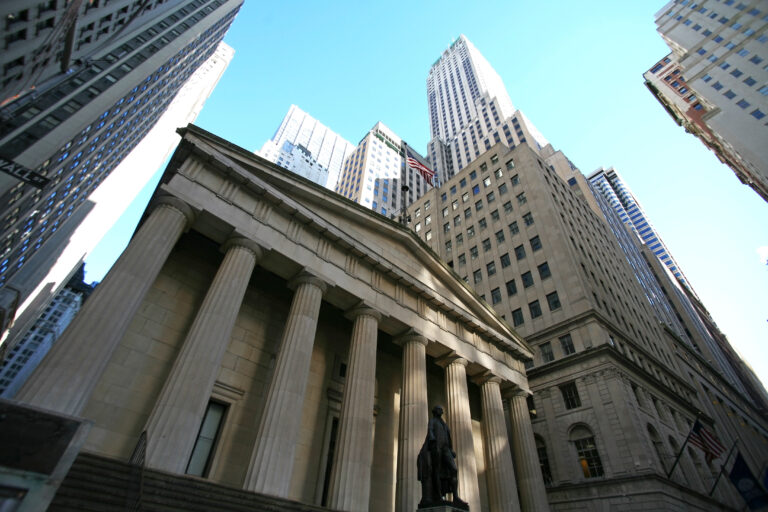Recently, institutional crypto adoption has been at the centre of discussion. A growing number of public companies, major banks, hedge funds, and wealth managers race to increase their exposure to bitcoin and other digital assets.
While Bank of America created a new crypto research team and enabled BTC futures trading for clients in July, Goldman Sachs teamed up with the cryptocurrency merchant bank Galaxy Digital to trade Bitcoin derivatives. BlackRock, the world’s largest asset manager, has also found digital asset futures contracts enticing. Goldman Sachs even filed an application with the United States Securities and Exchange Commission (SEC) to launch a decentralized finance and blockchain exchange-traded fund (ETF).
Ironically, JPMorgan, led by the same Jamie Dimon who called bitcoin a “fraud” and threatened employees trading bitcoin with firing them, has rolled out access to six crypto funds for all its private bank clients. More Wall Street giants like JP Morgan, Goldman, BofA, and BlackRock join the group of institutional investors looking to dabble into bitcoin. Of these, 71% plans to invest in digital assets, and a further 82% with current exposure to crypto expects to expand their cryptocurrency holdings by 2023. But what makes bitcoin so attractive for institutional investors, and how would the initiatives of Wall Street giants impact the digital asset industry?
How bitcoin attracts institutional investment
From calling Bitcoin a “fraud” and comparing the hype around the digital asset industry to the Dutch tulip mania in the 17th century to launching their own crypto-based products and services, the initiatives of Wall Street banks signal a significant shift in attitude towards the cryptocurrency asset class. Indeed, institutional investors have not just changed their minds about bitcoin. They are ready to go all-in on crypto investments this year.
If we think this through, it makes sense for them to increase their crypto exposure now. Today’s digital asset market is very different from what we had four years ago. 2017’s bull market was fueled by hype. Most projects took advantage of the Initial Coin Offering (ICO) boom to raise funds based solely on a concept and without any developmental progress. In fact, over 80% of the ICOs launched that year were identified as fraudulent.
It’s hard to deny that hype still plays a significant role within the industry. However, today’s cryptocurrency market features a working infrastructure. In addition, there is a rapidly growing ecosystem of innovative solutions and an increasing number of regulated services. As a result, some still believe that bitcoin is predominantly used for illicit transactions. This is actually just 0.34% of the total transferred value. However, the overall sentiment towards cryptocurrencies has changed drastically since 2017. Many institutional investors have realized the value the industry creates.
Crypto in the face of fiat problems
As central banks keep interest rates at low levels and continue printing money to stimulate the economy recovering from the pandemic’s impacts, institutional investors find themselves struggling with record high inflation rates and low to negative yielding bonds. For these reasons, bitcoin has become an attractive asset for institutional investors. It features a high growth potential, a maximum supply cap, and a disinflationary mechanism that reduces the new flow of Bitcoin's supply by 50% every four years.
Many investors consider bitcoin a safe-haven asset that features a negative or limited correlation with traditional instruments. This is an attractive quality for institutional investors. They can use the cryptocurrency to hedge against potential stock market corrections or bearish price trends. On top of this, there’s a growing demand for Bitcoin from ultra-high-net-worth individuals (UHNWs). These include Elon Musk, Paul Tudor Jones, and Stanley Druckenmiller.

At the same time, launching crypto initiatives like Wall Street banks did allows financial players to reach out to new audiences that are not interested in traditional finance and banking solutions. Indeed, younger generations are more open to the innovation that comes with digital assets. While also preferring mobile banks to the services of traditional financial institutions.
Should we fear crypto regulation?
When it comes to cryptocurrency adoption, many see a problem in regulators working on establishing a legal framework for digital assets lately. However, regulators are not the issue here. Neither retail nor institutional investors should see them as a threat. What’s problematic instead is that we don’t have a coherent crypto regulation around the world. This has led to some nations enacting laws that do not fit well for the sector.
A great example is the controversial cryptocurrency tax requirements that have been included in the bipartisan infrastructure bill in the U.S. However, the bill hasn’t passed yet. It’s up to industry players, lawmakers, and regulators to cooperate and create a framework where everyone can work together efficiently. This statement should apply to other laws around crypto globally. For instance, regulators in the United Kingdom have introduced strict rules for digital asset businesses too. Blockchain enterprises have to acquire a license to operate. In addition, they have to be careful about how they advertise their products and services to consumers.
Cooperation has advantages
At first, these new rules can sound quite scary for market players. However, dedicating the necessary time and resources to cooperate with regulators holds great advantages for the industry. Eventually, a consensus between regulators and crypto players will create an environment where businesses, consumers, and authorities can mutually benefit from the innovative technology and the rapid growth of the market.
Most importantly, regulation is heading forward. It is continuously improving. As the process is far from finished, it still needs room to grow to work correctly. For that reason, while the current trajectory is right, we should give some time for regulators to make laws more convenient for institutional investors and other market players. In the meantime, it's unlikely for the current regulatory environment to halt crypto adoption.
Institutional crypto initiatives create trust in the industry
No matter what major banks said about bitcoin a few years back, institutional crypto initiatives should be welcomed in the industry. By offering regulated digital asset products and services, Wall Street banks and financial institutions help the market mature and attract trust from both regulators and the mass audience. This includes those who have preferred to stay away from digital assets in the past.
In addition, the massive inflow of institutional investors and other professional traders will increase digital asset turnovers while making the market more efficient and rational. As a result, the growth of cryptocurrencies will likely slow down. However, so will their volatility fall, which has been a major concern for institutional investors. Recently, 47% of them cited volatility as a potential issue, according to a Deloitte survey.
Most likely, this will create a cyclical process, like what we saw last year. Each bull market will take longer but won’t be as intense as in 2017 or earlier. In the end, volatility will decrease to a level that will eliminate the cyclical nature of the cryptocurrency market. This is the point when crypto becomes a fully mature asset class.




